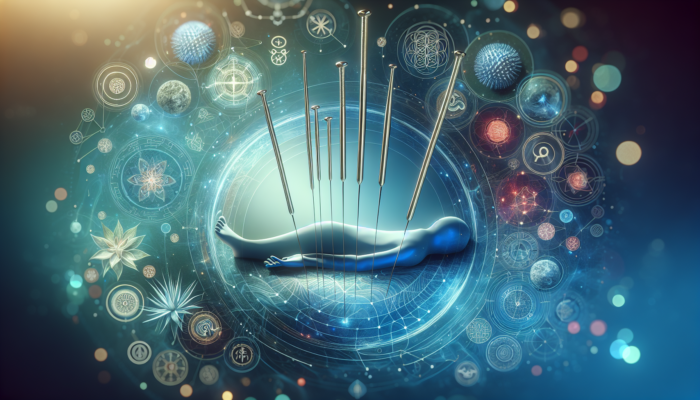Book Treatment Now

NADA History and AcuDetox
NADA had its beginnings after a young psychiatrist, in New York’s South Bronx, read of the work of a Hong Kong neurosurgen Dr. Wen.
Doctor Hsiang-Lai Wen began researching the connection between ear acupuncture and addiction treatment. When in the early 1970s, he had stuck an acupuncture needle in the lung point of a client and added electrical stimulation. The purpose being for the client to lose sensation in his skull, so the surgeon could perform brain surgery while the client was awake.
Dr. Wen did not know that the client was addicted to opium. After a time, the client confessed with great delight to the nurse that his withdrawal symptoms were disappearing. The nurse reported this to Dr. Wen who then began his research, working on rodents and later on humans. He received grants for his this from the World Health Organisation and in 1972 he spoke and published his work.
The American directed a hospital-based methadone clinic for heroin addicts and was looking for an alternative to methadone. At the time, a collective of gangs – The Young Lords and The Black Panthers – had been doing acupuncture. Doing this on their own for some time, at the clinic, buying needles in Chinatown and using them on the countless addicts from the ghetto neighbourhood who wanted help.
The authorities shut down the initiative of the gangs and the situation deteriorated. The young white doctor who supported the efforts of the gangs was murdered and found stuffed in a closet.
Dr. M.O. Smith

Dr. Michael Smith, a young doctor fresh out of psychiatric training arrived. He wanted something quick and useful for the many people afflicted to addiction through methadone at this clinic, who wanted help getting off of the drug.
Dr. Smith brought to Lincoln Hospital the electrical stimulating machine and needles Dr. Wen was using in Hong Kong and began treating heroin and methadone addicted clients in the South Bronx. Eventually, the machine’s batteries died. This clinic was in the ghetto of the Bronx and received little funding, so replacement batteries were not attainable.
Smith, who had been studying Chinese medicine, soon realised that not using the electrical stimulation worked better. The stimulation was too intense for the yin deficient clients. Through trial and over time he added four more acupuncture points. Eventually he was able to use the protocol on his clients. All of whom were abusers of alcohol, cocaine, marijuana, methamphetamine, and prescription drugs. He standardized the formula to make it efficient to perform and readily reproducible.
Over time ear seeds, beads, magnets, and a six-herb formula of his own – now called Sleepmix Tea – were added.
At some point articles about the South Bronx clinic began appearing in the popular press and like the ‘Lame to Lourdes’, acupuncturists, counsellors, and others trudged through the litter and discarded syringes of the ghetto; leading up to the clinics front door, ignored the cacophony of dealers peddling drugs along the route, and learned this wondrous technique to bring it back to their place of employment.
NADA Organisation
 In 1985 social workers David Eisen and Ruth Ackerman, acupuncturists Carol Taub and Patricia Culliton, and others combined forces and formed NADA, the National Acupuncture Detoxification Association, as a 501c3 non-profit professional organisation.
In 1985 social workers David Eisen and Ruth Ackerman, acupuncturists Carol Taub and Patricia Culliton, and others combined forces and formed NADA, the National Acupuncture Detoxification Association, as a 501c3 non-profit professional organisation.
NADA is a non-profit organisation. The goal is to expand awareness of acupuncture as a valuable treatment for addiction. Including recovery, enrol members, provide reference materials, develop and update a standardized training curriculum, and develop a system for registering trainers and delivering training. Those who finish the training with the approval of their Registered Trainer receive a certificate of completion from NADA. They are then allowed to use the title Acudetox Specialist.
Today there are over 25,000 trained associates and Acudetox Specialists (ADS’s) and over 2,000 clinical sites worldwide. Of which 1,500 practitioners are in the United Kingdom alone, working in 500 treatment sites including 130 prisons where guards as well as other prison staff have become ADS’s, providing treatment for prisoners.
In the United States there are 21 states where ADS’s have legally recognition to treat clients in agencies treating addiction, mental health, and post traumatic stress disorders. There are also two states where nurses may provide the NADA 5-point Acudetox protocol.
The NADA office is located at the university in Laramie, Wyoming, USA. For more on NADA see www.acudetox.com




The journey of NADA’s inception is truly fascinating and highlights the profound connections between medical practice and innovation. Dr. Wen’s discovery reminds me how often significant breakthroughs can arise from unexpected situations. The narrative of a simple acupuncture treatment transforming lives speaks volumes about the potential of integrative medicine.
What a fascinating exploration into the origins of NADA and the impact of Dr. Hsiang-Lai Wen’s groundbreaking work! It’s remarkable how a medical procedure initially aimed at facilitating brain surgery led to significant advancements in addiction treatment. The serendipity of the situation accents the often unpredictable path of medical discovery — it reminds me of how innovations in science can emerge from unexpected scenarios.
This is such a compelling look into the origins of NADA and the innovative spirit behind Dr. Hsiang-Lai Wen’s work! It’s fascinating how a seemingly accidental observation during a surgical procedure led to a breakthrough that could alter the landscape of addiction treatment. The serendipitous nature of research often strikes me; sometimes, profound discoveries come from unexpected places, making you wonder what other potential solutions are waiting to be found in the margins of medicine or psychology.
It’s fascinating how a moment of medical necessity led to such a groundbreaking discovery in addiction treatment. Dr. Wen’s approach highlights the often-overlooked connections between ancient practices and modern medicine. The idea that an unintended consequence of an acupuncture procedure could lead to a new pathway for treating addiction is a testament to the complexities of the human body and mind.
Your exploration of NADA’s origins highlights a fascinating intersection of innovation and compassion in the field of addiction treatment. Dr. Hsiang-Lai Wen’s approach, rooted in acupuncture and the unexpected outcomes of his work, serves as a poignant reminder of how scientific discovery can often stem from a place of genuine concern for human well-being. The story underscores not only the serendipitous nature of research but also how important it is to listen to patients. The experience of the client, finding relief from withdrawal symptoms in such an unanticipated way, emphasizes the unpredictable beauty of medical practice.
It’s really fascinating how something so unexpected like an acupuncture needle meant for surgery led to new insights in addiction treatment. I’ve always been intrigued by alternative therapies, especially how they can intersect with traditional medicine. The way Dr. Wen uncovered the potential benefits for opium addiction just speaks to the importance of open-mindedness in healthcare.
It’s fascinating to see how Dr. Wen’s initial work evolved into such impactful treatment methods for addiction. The serendipity of discovering ear acupuncture’s benefits for withdrawal symptoms is a testament to the importance of open-mindedness in medical research.
It’s fascinating how Dr. Wen’s work laid the groundwork for alternative treatments in addiction therapy, particularly when we consider how traditional methods like methadone have faced criticism for their own limitations. It makes me wonder about the evolving landscape of addiction treatment today. Are we embracing enough of these alternative approaches, or is there still a bias against methods that aren’t mainstream?
The journey of NADA is truly fascinating, especially when we consider how unexpected discoveries can shape therapeutic practices. It’s remarkable how something as ancient as acupuncture can intersect with modern medicine in such innovative ways. Dr. Wen’s initial foray into using acupuncture for pain management during surgery inadvertently opened doors to new avenues in addiction treatment.
The exploration of Dr. Hsiang-Lai Wen’s pioneering work on ear acupuncture as an alternative for addiction treatment raises significant questions about the integration of traditional methods with contemporary medical practices. It is fascinating to consider how a chance occurrence during a surgical procedure led to a breakthrough that would impact the lives of countless individuals struggling with addiction.
Your observations about Dr. Hsiang-Lai Wen’s work shed light on a truly remarkable intersection of traditional and modern approaches to medicine. It’s intriguing to think about how a single, unexpected moment during surgery sparked a broader exploration of ear acupuncture for addiction treatment. This example reflects how serendipity can play a role in scientific progress.